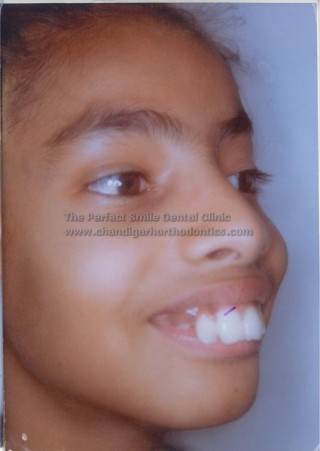Orthodontics for Children
Orthodontists specialize not only in the cosmetic appearance of your child's teeth but also in the overall health and long-term functioning of the teeth and jaws. Not everyone is born with beautiful teeth and it is important to address dental issues early.
.jpg)
Early treatment in younger patients may present the opportunity to:
- Influence jaw growth in a positive manner
- Improve the width of the dental arches
- Reduce the need to extract permanent teeth
- Reduce or sometimes eliminate the need for jaw surgery
- Lower the risk of trauma to protruded front teeth
- Correct harmful oral habits
- Improve aesthetics and self-esteem
- Simplify and sometimes shorten treatment time
- Reduce the likelihood of impacted permanent teeth
- Improve speech development
- Guide permanent teeth into more favorable positions
- Preserve or gain space for erupting permanent teeth
- Encourage better compliance before the uncooperative teenage years.
Frequently Asked Questions.
At what age should one schedule an appointment for an orthodontic screening?
The American Association of Orthodontists recommends an orthodontic screening at age 7. By this age, several permanent teeth in most children have erupted, allowing us to effectively evaluate your orthodontic condition. Some common signs that may be indicating factors that your child will need orthodontic treatment include:
•Difficulty biting or chewing
•Early or late loss of primary teeth
•Thumb sucking
•Finger sucking
•Clicking or popping jaws
•Biting the cheek
•Apparent abnormal bite
•Apparent facial imbalance
•Crowded or misplaced teeth
An early orthodontic evaluation allows your orthodontist to recognize potential problems early and correct them before they become more serious.
What benefits come along with early orthodontic treatment?
Early evaluation provides both timely detection of problems and greater opportunity for more effective treatment. Prudent intervention guides growth and development, preventing serious problems later. When orthodontic intervention is not necessary, an orthodontist can carefully monitor growth and development and begin treatment when it is ideal.
Some of the most direct results of interceptive treatment are:
•Creating room for crowded, erupting teeth
•Creating facial symmetry through influencing jaw growth
•Reducing the risk of trauma to protruding front teeth
•Preserving space for unerupted teeth
•Reducing the need for tooth removal
•Reducing treatment time with braces
Does teeth need to be extracted for braces?
Removing teeth is sometimes required to achieve the best orthodontic result. Straight teeth and a balanced facial profile are the goal of orthodontics. However, because new technology has provided advanced orthodontic procedures, removing teeth is not always necessary for orthodontic treatment.
How does child’s growth affect orthodontic treatment?
Your child’s growth and orthodontic treatment can work well with each other. Often times either the upper front teeth are protruding ahead of the lower teeth because the lower jaw is shorter than the upper jaw. As your child’s jaw continues to grow, we can use orthodontic appliances to help guide their growth allowing the lower jaw to catch up with the upper jaw. Occasionally, if there is a severe discrepancy in the length of the jaws, corrective surgery may be necessary. It is important if your child has problems with the width or length of their jaws to be evaluated by age 10 for girls and 12 for boys.
Can one-play sports during orthodontic treatment?
Yes, we recommend a mouth guard for all sports.
Will having braces interfere with playing musical instruments?
While it may take some time getting used to playing instruments, such as wind or bass instruments, typically braces do not interfere with playing instruments.
Why does it sometimes take longer than the estimated time for orthodontic treatment?
We can only provide you with an estimated time frame of how long you will be in braces. Each patient grows differently and responds to treatment differently so variables are endless when trying to determine an exact time frame. With that in mind, the purpose of orthodontic treatment is to achieve the desired result from treatment for you. Until that result has been achieved, we will continue with treatment as long as necessary. Generally, patients who cooperate by wearing their appliances and rubber bands as instructed by their orthodontist tend to complete treatment on time and have achieved amazing results.
What is the purpose of retainers?
If not stabilized, the teeth can begin to shift out of position once the braces have been removed. Retainers are designed to hold teeth in the corrected position until the gums and bones are fully adapted to these changes. To ensure that your results last a lifetime, it is important to wear your retainers as instructed.
Will my child’s teeth shift back later?
As we age, our teeth tend to shift. Wearing retainers as instructed can help stabilize the correction and maintain your beautiful, straight smile for a lifetime. Once your orthodontist has instructed you that full time wear is no longer necessary, wearing your retainer nightly will help maintain the position of your teeth and prevent future shifting.
Will my child’s wisdom teeth have to be removed?
About 75% of patients who have not had other teeth extracted for orthodontic treatment will likely have to have their wisdom teeth removed. Your orthodontist will work with you and your family dentist to determine if having your wisdom teeth extracted is right for you.



